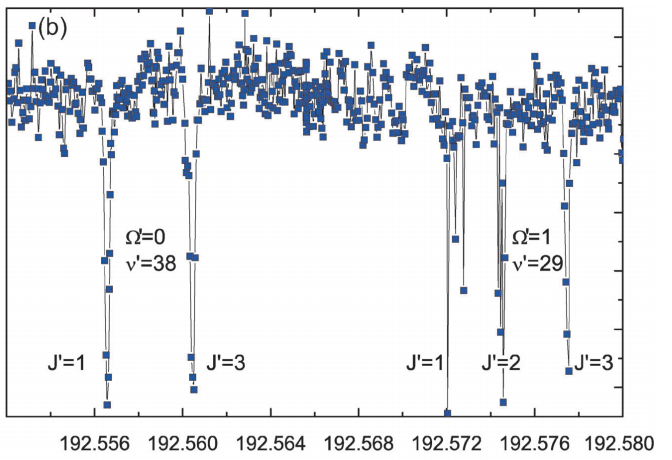Formation, cooling and spectroscopy of neutral and ionized molecules
 This OR uses as a necessary prerequisite the structure calculations of atoms, molecules and ions
combined with spectroscopic data when they exist to predict as reliably as possible the formation
predict in the most reliable way possible the formation patterns of these particles in their absolute ground state and also to interpret the
and also to interpret the spectra and observations made by our experimental collaborators.
experimental collaborators.
This OR uses as a necessary prerequisite the structure calculations of atoms, molecules and ions
combined with spectroscopic data when they exist to predict as reliably as possible the formation
predict in the most reliable way possible the formation patterns of these particles in their absolute ground state and also to interpret the
and also to interpret the spectra and observations made by our experimental collaborators.
experimental collaborators.
Four studies are developed in this RO.
– The first study aims at advancing the understanding of the collisional processes
collisional processes responsible for the limited lifetime of cold molecule samples in their absolute ground state, which
absolute ground state, which will allow to avoid them or on the contrary to promote them thanks to a
laser photon of a well chosen frequency to direct the reaction towards well defined products. Probe
and control these chemical reactions by studying the light-molecule interaction will be the main objective of
of this study which will avoid the loss of molecules and will also allow to discover
discover efficient mechanisms for the formation of ultra-cold polyatomic complexes.
– The second study, in collaboration with Brazil, consists in joining our efforts to invent new cooling schemes for molecules that can be transposed to a majority of
molecules and not only to bialcaline molecules. Guided by our simulations elaborated with the help of
molecular structure calculations, the experimenters will produce Rb2
molecules directly from a supersonic molecular jet by implementing a rovibrational optical
rovibrational optical pumping technique.
– Investigations on ultra-cold ion-atom collisions and molecular ion formation
subject of the thesis of X. Xing’s thesis (defense expected in the fall of 2021), will be continued by
extending the numerical developments of this thesis to the (Rb,Sr+) couple. Indeed, during the
collaboration initiated with the group of R. Ozeri (Weizmann Institute, Israel), we had limited the theoretical model to a semi-classical collisional approach which revealed some disagreements with the
experimental results. These disagreements should disappear in the framework of the quantum model implemented by X. Xing.
implemented by X. Xing. These calculations will be extended to a couple of lighter species, (Li,Ca+), studied by
T. Mukuyama’s team (Osaka, Japan), and also of interest to S. Rangwala’s team (RRI, Bangalore,
India).
– The last study is led by Fréderic Carlier to the theoretical study of classical and quantum chaos regimes in diatomic molecules. The signature of classical chaos has been observed in the spectra of the hydrogen or lithium atom in the presence of an intense magnetic field (Thesis of N. Bouloufa, 1993). The chaos problem has also been studied in the case of the three-body coulombic interaction by D. Delande (Thesis B.Grémaud 2006) for two-electron atoms. We extend this last study to molecular physics by studying the H2 or Li2 molecule by calculating first the Poincaré cross sections as a function of well chosen parameters to study the classical dynamics with transition to chaos before looking at the links that may exist with quantum mechanics.
- Inserer le nom de l’article 1,
Noms des auteurs, Journal etc.. - Inserer le nom de l’article 1,
Noms des auteurs, Journal etc..
- N. BOULOUFA
nadia.bouloufa@universite-paris-saclay.fr - O. DULIEU
olivier.dulieu@universite-paris-saclay.fr - F. CARLIER
frederic.carlier@universite-paris-saclay.fr - L. WIESENFELD
laurent.wiesenfeld@universite-paris-saclay.fr - A. CRUBELLIER
anne.crubellier@universite-paris-saclay.fr - E. LUC
eliane.luc@universite-paris-saclay.fr
